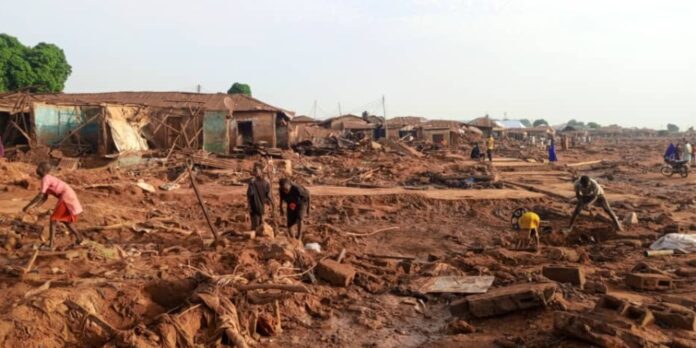By Abdullahi Inuwa
A wave of grief has swept across Niger State following the devastating floods that have claimed the lives of 153 people, displacing thousands and destroying homes, farmlands, and critical infrastructure.
The tragedy has sparked national outrage and renewed scrutiny over the management of the ₦128 billion reportedly disbursed to state and local governments for flood and ecological control between January 2024 and March 2025.
Communities along the River Niger, especially in the flood-prone Mokwa, Lavun, and Agaie LGAs, were hardest hit, with residents lamenting the absence of early warning systems, poor drainage, and non-existent relocation support.
“We were left on our own. The waters came without warning, and the government was nowhere to be found,” said Malam Isa Adamu, a survivor who lost his wife and two children in the disaster.
Records from the Federal Ministry of Finance show that ₦128 billion was released under the Ecological Fund and related intervention schemes, aimed at preventing disasters such as this. However, the extent of devastation in Niger State—and several others across the country—raises serious concerns over how these funds have been utilized.
Civil society groups are now demanding a full audit and investigation.
“How can over a hundred lives be lost when billions were supposedly released to prevent exactly this kind of tragedy?” asked Hauwa Bello, spokesperson of the Flood Justice Coalition.
Meanwhile, President Tinibu, through a statement issued by the National Emergency Management Agency (NEMA), expressed condolences and pledged federal support. Yet critics argue that condolences without accountability are not enough.
As families continue to bury their dead and wade through what remains of their communities, one haunting question lingers: Where did the money go?




